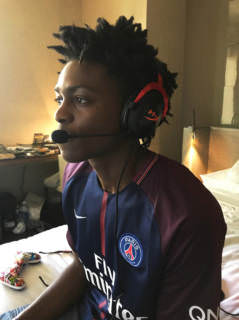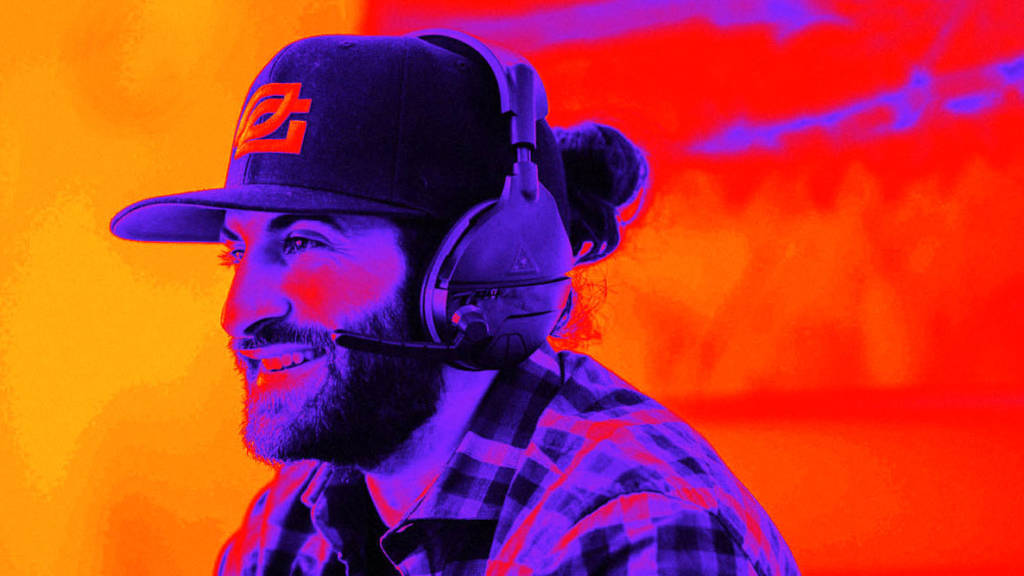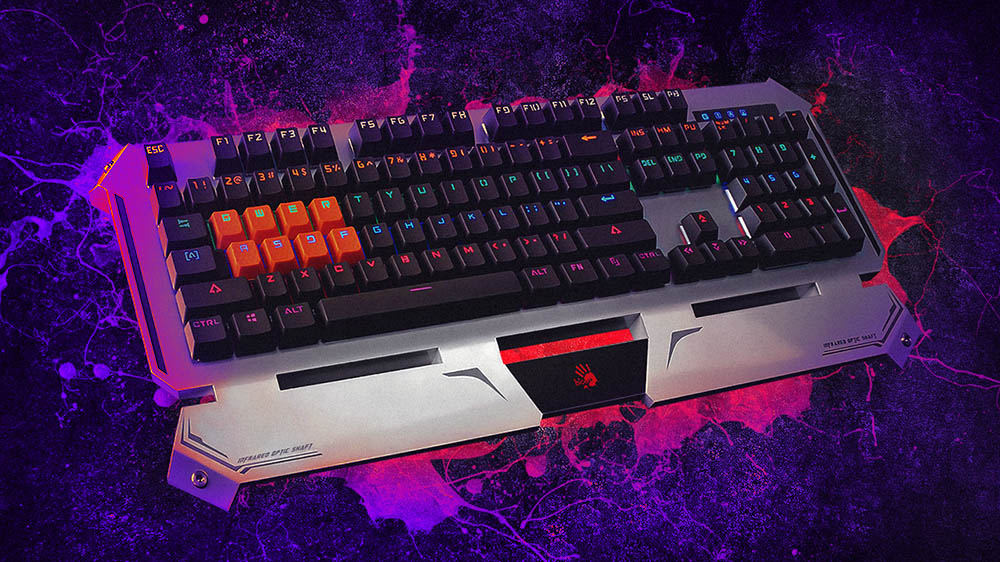The peripherals and esports ecosystem is flooded with brands, globally recognized teams and upstarts looking for ways in which to forge relationships.
As the video games consumer continues to evolve, so must the peripheral marketing for industry titans that peddle headsets-and-accessories products in order to reach highly engaged audiences with seemingly endless amounts of money to spare. Innovating and adapting products to changing needs is one thing, reaching the target consumer is another.
How are gaming hardware brands highlighting their company’s calling card with esports and tapping into the spirit of marketing competition to gain an audience share?
AListDaily separately interviewed executives from HyperX, Turtle Beach and Bloody Gaming to learn how their marketing is evolving.
How are you fighting for market share against the competition that’s also marketing through esports?
Daniel Kelley, HyperX’s director of corporate marketing: There is no one formula for successful marketing here, but we begin and end any of our endeavors by thinking how we can get fans closer and more engaged with the scene, while ensuring our products and brand get exposure along the way. We’ve been in the middle of the esports scene for 10-plus years, so we have a good handle on how to approach our marketing investments, particularly against our direct endemic competitors.
As the scene grows and more money comes in from the larger non-endemic brands, it does force us to think more creatively and be even more opportunistic on the best ways to get HyperX in front of the passionate gaming audience. This is the fun and beauty of esports in that it’s ever-changing and growing quickly with new game titles, tournaments, teams and personalities to align with.
Bill Hsu, sales and marketing director for Bloody Gaming: We stand out against the competitor in the market by developing from ground-up our own innovative technology that provides the gamer with a tool to dominate with a competitive edge. We put a lot of thoughts into developing the latest technology. One of those is our Light Strike technology that will bring mechanical keyboards out in to the digital age. With this technology it will combine competitive edge and reliability.
When the game is on the line, pro gamers need pinpoint precision and speed to keep up with the grueling competition. Mechanical keyboards have been all the rave, but it is a technology that was primarily from the 1980’s. We began to understand that the tactile feedback or lightness of various switch designs is what gamers truly wanted. So, we developed an optical switch that eliminates all the fundamental problems of mechanical keyboards and opted to create a zero-lag digital switch that can still fulfill the satisfying tactile or linear feel gamers have come to love and expect.
Mac Marshall, senior director of brand, PR and communications for Turtle Beach: In terms of broad market share we’re always looking for ways to maintain and improve our leadership position, which has been over 40 percent of the overall console gaming headset space for the past several years running now.
As far back as 2012 and 2013 we realized there hadn’t been a truly innovative and ground-breaking headset created for today’s generation of esports athletes and hardcore gamers, so we set out to rectify that and came up with the concept for the Elite Pro, which launched in June 2016.
Once the Elite Pro was in development we knew just creating the headset alone wasn’t enough, so we began showing early versions of it behind closed doors to esports teams and players which inevitably led us to join forces with OpTic Gaming, as well as a variety of other higher profile and up-and-coming esports teams and organizations.
In doing this, we moved away from being just sponsors with banners on the wall at events and instead went the route of putting our wares on the heads of some of the best gamers in the world. If the pros feel the Elite Pro is worthy enough for them to use when they compete, then it becomes aspirational for other gamers to want to use the same gear they see their heroes playing in. Since launching the Elite Pro, we’ve received countless requests for potential partnership opportunities, which means we’re on the right path.
Nick Bourne, director of esports, partnerships and product for Turtle Beach: It comes down to making smart choices, and forming real-lasting connections with the right teams and personalities. We’ve chosen to strategically align ourselves with key partners across the esports and gaming world. Esports is the pinnacle of competitive gaming, but the challenge comes in relating that to a gamer’s journey, wherever they are and however serious they consider themselves.
Collaborating naturally with the right partners, including the players and content directors at OpTic Gaming, the CS:GO powerhouse Astralis or professional FIFA players of VFL Wolfsburg allows us to tell meaningful stories and not just dip in and out when a team wins a tournament. We work collaboratively with our partners and try to maximize scope by combining their efforts inside and outside of esports. An example of this is how we recently brought Dr. DisRespect to the OpTic Scuf House to create The Summoning video and other content around his visit.
What is the key ingredient in order to resonate with your marketing? How are you differentiating your brand with this strategy?
Kelley: We brand a history of growing with the gaming community over a long period of time including activities at tournaments, events and sponsorships that include over 450 professional players in 2017. We also spend a lot of time listening to our customers before we develop a new product. We include their opinions and wants in our design cycle, supporting what the community wants.
Finding ways to deliver our message to the dozens of micro-communities within gaming culture is a key to our success. Creating a one size-fits-all message for gamers is bound to feel inauthentic. We recruit ambassadors, influencers, players and teams from a range of game types and communities so that there is HyperX brand representation wherever gamers hang out, stream and interact with one another.

Hsu: Thirty years of experience has led us to the forefront of gaming technology. Gaming is in our blood and we live to innovate in this market. Each year we continue to develop new technology to benefit the competitive gamers, we listen very carefully to the community and see what they lack and what is it that they would like to improve their gaming experience.
We value our fans and supporter’s ideas and thoughts, so we always try to listen and develop something to provide them an edge for gaming . . . Unlike most of our competitors, we take a much more proactive approach in fully understanding what we can do to push the boundaries of gaming peripherals by talking to those who are in the heat of battle at all times. Many of our own key staff members have competed on those very same stages and can tweak our technology to the various changes in styles and strategies that dominate the leagues today.
Marshall: The key ingredient here plays off what I said earlier. For us, this is about being a partner, not just a sponsor. We strive to be more than just a revenue stream. We pay attention to the teams and players and their needs. We go above and beyond to try and do cool stuff for them.
Bourne: Completely agree. The key for us is the connection and the relationship we’ve fostered with our partners and how that makes better products and experiences. For instance, we developed an OpTic Limited Edition of our Elite Pro headset, and every detail of that product was collaborative with the OpTic team members and players, with the final product being both an homage to OpTic and a true expression of what OpTic is to their fans—and to us.
We followed that up by debuting that headset at an OpTic Turtle Beach Ping Pong tournament, of all things, and what that did was allow the OpTic players to express their personalities through a different kind of competition. And of that whole activation, the moment that stands out for me is the presentation we did for OpTic H3CZ where we packaged his new Elite Pro OpTic Limited Edition headset with an original Turtle Beach X1—the first gaming headset he ever owned, and something it took a long time for us to find in our archives. His reaction, and those moments of connection through gaming are something everyone can relate to.
How is your esports marketing continuously evolving? What are the successes and failures that you can share?
Kelley: In 10 years, from signing our first esports team, to now with over 35 organizations covering over 90 teams, it has been a healthy and exciting experience with our fans and gaming community. Growth in the last couple years includes more activities with NBA players like Gordan Hayward and De’Aaron Fox, including our recent sponsorship as the official gaming headset of the Philadelphia 76ers and Team Dignitas have brought us closer to traditional sports too. As more and more of the traditional stick-and-ball sports execute on strategies to embrace esports, there are so many fun and unique opportunities for HyperX and others that are paying attention.
Marshall: To me, the marketing success rests in the product, and through the product the teams, and through the teams their fans and through the fans to a wider audience of gamers. Truth be told, the Elite Pro came out of left field as I don’t think anybody was expecting us to be the force behind what’s arguably the best competitive gaming headset money can buy. If the Elite Pro sucked, then we’d be in a much different boat compared to the one we’re in today.
Just taking the steps to get to where we are now was a massive evolution of our prior marketing strategy tactics, and we continue leaning into this mentality as we move ahead. We’ve already started waterfalling some of the Elite Pro’s unique features down into other Turtle Beach gaming headsets . . . As for failures, I just wish we would’ve gotten started on the Elite Pro line a few years earlier than we did as it would be nice to have the Elite Pro get more time in the saddle since its debut. It’s been a very fast-paced wild ride getting here, but a fun one at that.
Bourne: That’s exactly it. We’re looking at esports the same way Mercedes looks at F1 racing, or Nike looks at the NBA and NFL, as the crucible of innovation for gaming audio, be that at the tournaments or in supporting a non-stop eight-day-long “Race to Prestige” stream.
We’re constantly working on innovations that make gaming better . . . We want to bring the best experiences to every gamer, and the next generation of Elite Pro are the most exciting products I’ve worked on. We’re taking every iteration back to the pros we work with. Every innovation has been battle, tournament and stream tested.
We’re hiding in plain sight testing new innovations every day with our partners, and far more things fall out as make it into the products. It’s a constant process of refinement, and failure is a necessary part of development. Our marketing follows the product, and follows the gamer.
Innovation means leading and taking difficult steps. We’ve learned lessons from our time sponsoring tournament series like MLG, gamer events like Dreamhack and our teams. Our success is built on a platform of consistent content, engagement through conversation and telling stories people want to participate in.
Hsu: The gaming market is seeing explosive growth globally due to the rise of esports. From blue-chip corporate sponsorships, big prize pools and massive fan followings. We continuously strive to make a difference in the esport community by supporting the teams, shows, events and influencers. Bloody shared a strong message of our ability to listen to our customers and understand opportunities to bridge the gap to newcomers.
Our most recent collaboration with Immortals led us to sponsor an esports event at the LA County Fair. While it’s the largest fair in the west coast of the US, it never held any esports-related activities. So we decided to support efforts into pushing mainstream awareness of esports and hosted the Immortals for a live tournament, meet-and-greet and help introduce Los Angeles to their Overwatch League team.
What we saw through this event was the power of esports competitors showcasing their talents to groups who have no idea what they are, but have since become more intrigued. Bloody believes that to grow the culture, we must first infuse them with the experience. The result has been phenomenal, and we believe these small micro-moments for those unaware with esports will lead them to becoming fervent fans. And who doesn’t want that?


